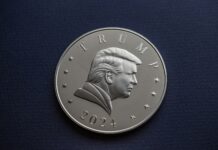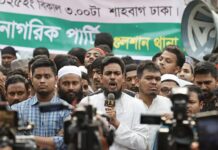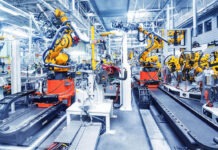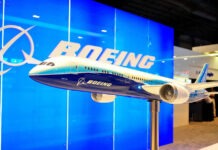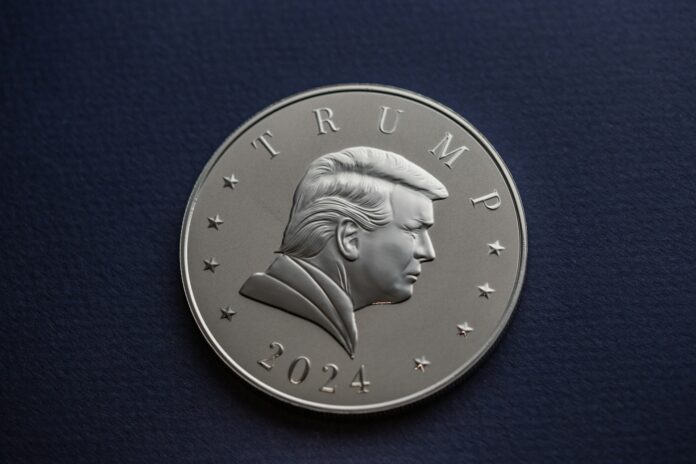The USA’s Plan, New Treasury Team and the Industrialisation Debate
QuickPost News | April 4, 2025 | International
President Donald Trump’s tariff policies in 2025 have thrown global trade into disarray, aiming to reshape the U.S. economy through what he calls “reciprocal trade.” With a new Treasury team in place, the administration is doubling down on its America First agenda, targeting trade deficits, illegal immigration, and the fentanyl crisis while pushing for a revival of American manufacturing. However, the chaotic rollout of these tariffs has sparked fears of a global trade war, economic recession, and rising consumer prices. Amid this, the Treasury team’s statements on industrialization and de-industrialization reveal a deeper strategy—and a contentious debate about the future of U.S. industry.
The USA’s Tariff Plan: A Strategy of Reciprocity and Pressure
Trump’s tariff strategy, which began taking shape after his January 20, 2025, inauguration, focuses on imposing steep tariffs to address trade imbalances and protect American industries. Key actions include:
- November 25, 2024: Trump announced a 25% tariff on all products from Mexico and Canada, citing border security and fentanyl trafficking, to start on his first day in office.
- February 1, 2025: Tariffs were imposed on China (10%), Mexico, and Canada (25%), though the latter two were paused on February 3 after negotiations.
- March 13, 2025: Trump threatened 200% tariffs on European wine and alcoholic beverages, escalating tensions with the EU.
- April 2, 2025: Trump declared a national emergency under the International Emergency Economic Powers Act (IEEPA), announcing a 10% baseline tariff on all imports starting April 5, with higher “reciprocal” tariffs—34% on China, 46% on Vietnam, 49% on Cambodia, and 20% on the EU—effective April 9.
The administration’s goals are clear:
- Reduce Trade Deficits: Trump highlights the U.S.’s $1 trillion goods trade deficit in 2023 as a threat to economic stability, aiming to incentivize domestic production.
- Address Fentanyl and Immigration: Tariffs on Mexico, Canada, and China are tied to demands for stricter border control and action against drug trafficking.
- Boost American Manufacturing: By making foreign goods more expensive, Trump hopes to encourage U.S. consumers to buy American-made products.
- Fund Tax Cuts: The White House estimates tariffs could generate $600 billion annually to fund tax cuts, such as eliminating taxes on tips and Social Security benefits.
The New Treasury Team and Their Vision
Trump’s new Treasury team, led by Treasury Secretary Scott Bessent, plays a pivotal role in shaping this tariff agenda. Bessent, a hedge fund manager appointed in late 2024, has been vocal about the administration’s economic priorities, emphasizing a return to industrialization. Alongside Commerce Secretary Howard Lutnick and the Council of Economic Advisers Chairman Stephen Miran, the team is steering the U.S. toward a manufacturing revival while addressing what they see as decades of de-industrialization.
- Scott Bessent on Industrialization: Bessent has stated that the administration’s plan is to “reorder the international trading system and bring manufacturing jobs back to the U.S.” He argues that this will address the affordability crisis by increasing real wages, particularly for Main Street workers, as opposed to Wall Street. Bessent also emphasizes “re-privatizing the economy” by cutting government spending, reducing federal employment, and deregulating the financial system to “re-leverage the private sector.” In a March 22, 2025, statement, he highlighted the need to “unshackle” the private sector to drive manufacturing growth, framing tariffs as a tool to make American industries competitive again.
- Stephen Miran on Manufacturing Growth: Miran, in a statement reported on April 4, 2025, said, “We’re making a lot more stuff in America, high-tech manufacturing, security goods, autos, a lot more stuff across the industrial spectrum.” He credits Trump’s policies—lower regulations, reduced taxes, and tariffs—for creating an environment where U.S. manufacturing can thrive, aiming to reverse the decline of industrial hubs.
- The De-Industrialization Concern: The Treasury team has pointed to a stark statistic: in the 1950s, manufacturing accounted for 28% of U.S. economic output, but by 2025, it has fallen to just 10%. They argue that this de-industrialization, driven by decades of free trade policies and offshoring, has not only hurt the economy but also poses a national security threat, particularly with reliance on China for critical goods like semiconductors and pharmaceuticals. Bessent and Miran see tariffs as a way to incentivize reshoring, bringing factories back to the U.S. to rebuild the industrial base.
The Chaos: A Policy of Uncertainty
The tariff rollout has been marked by inconsistency, drawing criticism for its chaotic nature:
- Shifting Policies: The Mexico and Canada tariffs were announced, paused, and later adjusted after negotiations. For instance, on February 3, both countries agreed to enhance border security, earning a one-month reprieve.
- Escalating Threats: Trump has used tariffs as leverage, threatening Denmark over Greenland and Colombia with 25% tariffs after its president rejected U.S. military deportation flights.
- Market Volatility: The Dow dropped 670 points on March 7, and global markets plummeted on April 4, with the S&P 500 losing nearly 5%—its worst day since March 2020.
This unpredictability has made it difficult for businesses to plan. A U.S.-based transportation equipment supplier reported in February 2025 that customers were pausing orders due to the lack of clarity, and the trade policy uncertainty index hit its highest level since 1960 in January 2025.
Economic Impact: Industrialization Gains vs. De-Industrialization Risks
The tariffs have had mixed effects on the U.S. economy, with both potential benefits and significant risks:
- Price Hikes for Consumers: Economists estimate that Trump’s tariffs will increase costs for U.S. households by an average of $2,100 in 2025. A high-end iPhone could cost $2,300 if companies like Apple pass on the costs.
- Business Reactions: Some companies, like General Motors, are increasing U.S. production to avoid tariffs, aligning with the Treasury team’s industrialization goals. However, others, like Stellantis, are laying off workers and closing plants in Canada and Mexico, raising fears of de-industrialization in North America. Small businesses, such as Spice Kitchen in Liverpool, England, have halted U.S. expansion plans.
- Global Trade War Fears: China has retaliated with tariffs on U.S. coal, LNG, and farm equipment, while the EU is considering “appropriate responses.” Japan’s Prime Minister Shigeru Ishiba called the tariffs a “national crisis,” with Tokyo’s stock market facing its worst week in years.
- Recession Risks: JP Morgan now estimates a 60% chance of a global recession by the end of 2025, up from 40%, due to disrupted supply chains and reduced demand.
The Industrialization vs. De-Industrialization Debate
The Treasury team’s focus on industrialization is a direct response to what they see as decades of de-industrialization, but the tariffs have sparked a broader debate:
- Pro-Industrialization Argument: The administration claims that tariffs will reverse de-industrialization by encouraging companies to manufacture in the U.S. A 2024 study cited by the White House found that Trump’s first-term tariffs “strengthened the U.S. economy” and led to $10 billion in new steel mill investments. Companies like Hyundai Steel are reportedly considering building plants in the U.S., and domestic steelmakers have praised the policy for supporting jobs.
- De-Industrialization Risks: Critics argue that the tariffs could backfire, exacerbating de-industrialization in certain sectors. For example, the 2018 steel tariffs created 1,000 steel jobs but cost 75,000 jobs in steel-using industries, such as manufacturing and construction, which employ 12 million workers. In Mexico, analysts like Marcus Nolands from the Peterson Institute predict that tariffs could lead to de-industrialization by disrupting the integrated North American auto supply chain, where parts cross borders multiple times during production. Singapore’s Deputy Prime Minister Gan Kim Yong also warned of economic slowdowns due to the tariffs, though some analysts note that countries like Singapore could benefit as U.S. buyers seek alternatives to heavily taxed suppliers.
Legal and International Backlash
Trump’s use of the IEEPA to declare a national emergency over trade deficits has raised legal concerns. While U.S. courts have historically granted broad authority under IEEPA, critics argue there’s no clear link between tariffs on goods like maple syrup and goals like curbing fentanyl trafficking. Internationally, China has challenged the tariffs at the World Trade Organization (WTO), calling them “protectionist,” though the WTO’s Appellate Body is largely inoperable due to U.S. opposition.
A Critical Perspective: Does the Plan Hold Up?
The Treasury team’s vision of industrialization through tariffs sounds promising, but a closer look reveals flaws. The claim that tariffs don’t raise prices—echoed by Bessent and supported by a 2024 statement from former Treasury Secretary Janet Yellen—contradicts economic consensus. Studies show that Trump’s first-term tariffs did not significantly boost employment in targeted industries like steel, where jobs remained flat at 140,000, while retaliatory tariffs cost 27,000 U.S. farming jobs. The current tariffs, affecting over $2.5 trillion in imports, are far broader, amplifying their potential to disrupt supply chains and raise costs. Moreover, the focus on industrialization ignores structural issues like the U.S.’s low savings rate and high consumption, which drive trade deficits more than foreign trade practices do. The chaotic policy shifts also undermine business confidence, potentially stunting the very manufacturing growth the administration seeks.
What’s Next?
The White House has signaled more tariffs on autos, aluminum, and pharmaceuticals, but posts on X indicate that the administration scaled back its April 2 plan, focusing on targeted reciprocal levies rather than sectoral tariffs on cars and chips, suggesting some responsiveness to market pressures. However, the Treasury team’s commitment to industrialization remains firm, with Bessent and Miran pushing for a manufacturing renaissance. As global leaders like the IMF’s Kristalina Georgieva urge de-escalation, the U.S. faces a critical juncture: can it rebuild its industrial base without triggering a global economic crisis?
A High-Stakes Experiment
Trump’s tariff plan, backed by a Treasury team focused on reversing de-industrialization, is a bold experiment to restore American manufacturing. While it may achieve short-term wins—like increased U.S. production in some sectors—the broader fallout, from price hikes to recession risks, threatens to undermine these gains. The industrialization-de-industrialization debate underscores the complexity of this strategy: tariffs may bring some factories back, but they could also disrupt global supply chains and harm U.S. industries in the process. As the world braces for a potential trade war, the U.S. must navigate this chaos carefully to avoid economic self-sabotage.

